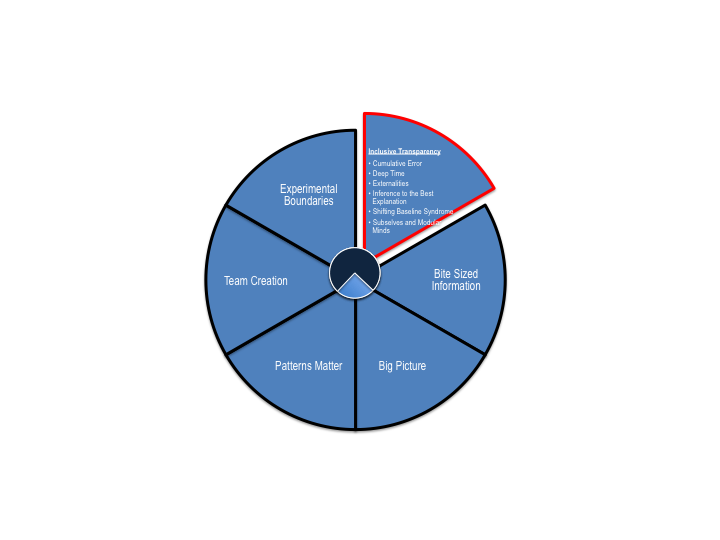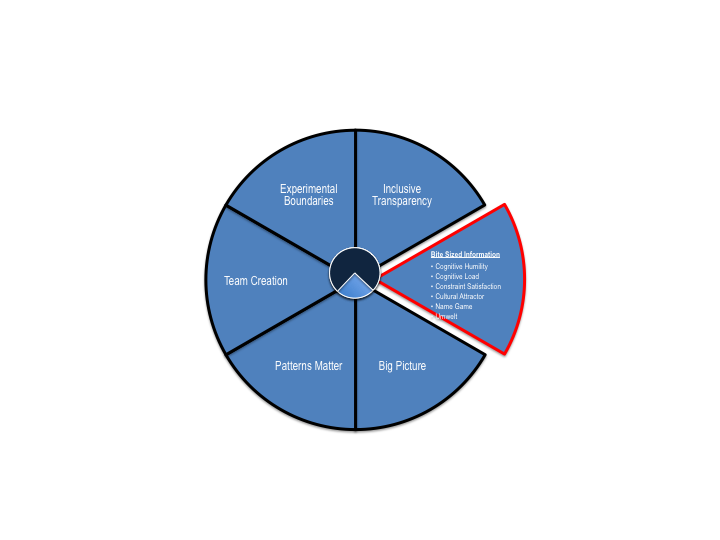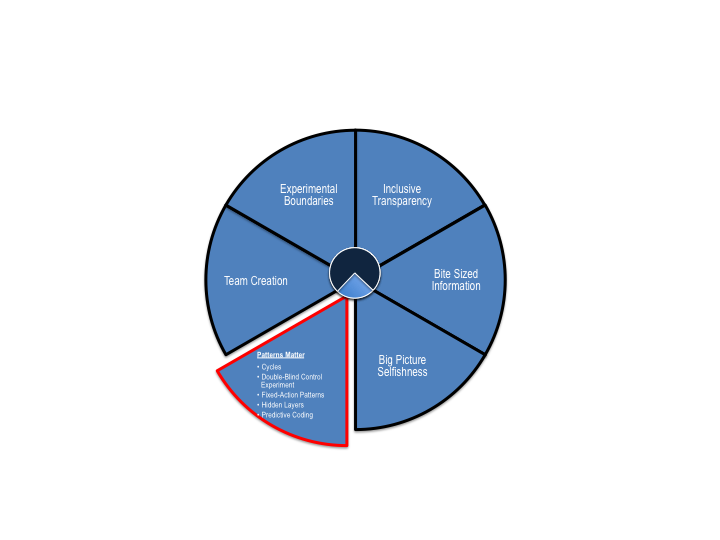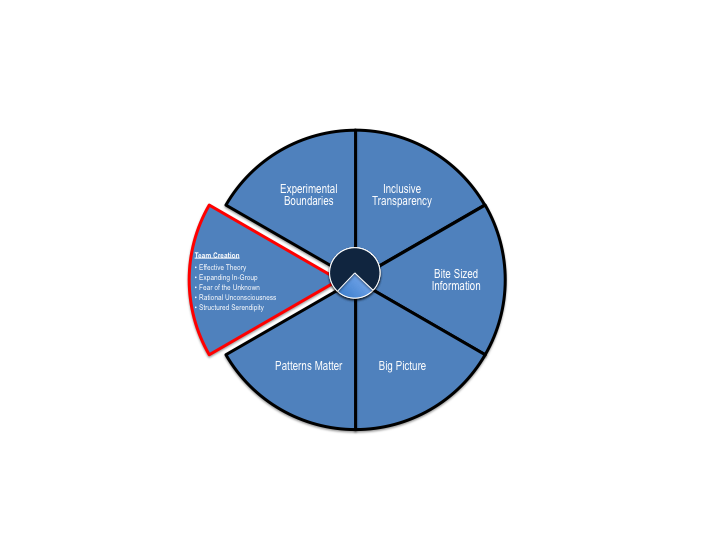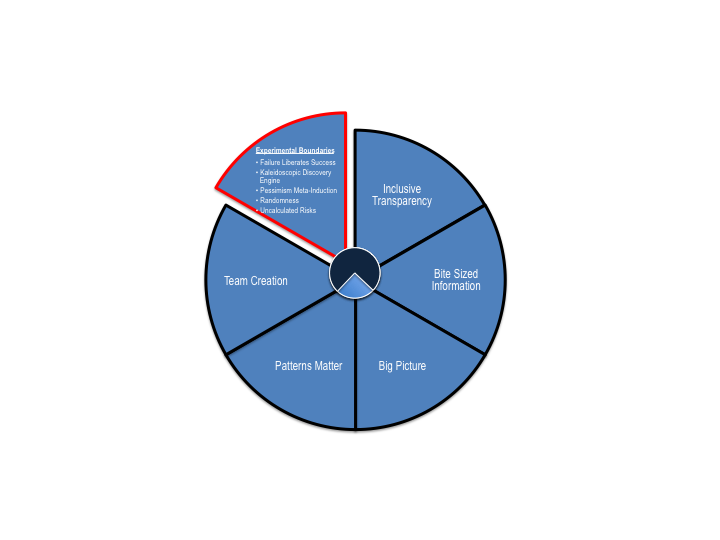by ARSALAN KHAN
Organizational transformation entails understanding where the organization is today and where it wants to be in the future in terms of people, products/services, processes and technologies. In order to accomplish this transformation, we have to determine the organization’s ‘eligibility’ by assessing its strategy, politics, innovation, culture and execution (SPICE) factors. The SPICE factors help us determine (1) the underlying motivations of why the strategy was developed, (2) who are the power players in the organization, (3) who is really responsible for innovation, (4) who is an example of corporate culture and (5) who would help in carrying out this transformation across the organization.
As the organization begins its transformation journey, one glaring fact that is revealed is that the most crucial element to accomplishing change cannot occur without people. People are your organization’s lifeblood. People are the biggest champions of change or the biggest obstacles to it. Thus, in order to bring transformational changes in the organization, we have to understand the following concepts that affect individuals and group dynamics:
A. Inclusive Transparency
1. Cumulative Error – Your message of transformation can be distorted along the way and could be translated into many things (e.g., layoffs, outsourcing etc.). To address this:
- Recognize redundant information, corroborated information, contradicting information, perspective-dependent information and bias information
- Understand that communication mutations are bound to happen and only by assessing the underlying reasons for those mutations is how they can be clarified
2. Deep Time – People believe that the past was shorter than the future. For organizational transformation this means that if the future does not have a due date then there is the tendency to think that transformation can happen at a later time. To address this:
- Have transformation due dates
- Share what happens after the transformation
- Assess motivators that change the discussion from ‘I will do it tomorrow’ to ‘Lets create the future today’
3. Externalities – Everyone affects everyone even if they don’t know it. For organizational transformation, this means that even the most isolated action in the organization can hinder change. This could be merely someone saying that they don’t believe transformation is going to be successful without giving any constructive feedback. Essentially, by saying this what people have done is created an opinion that be the seed to create doubt in others. To understand this:
- Determine who are the spoken and unspoken champions and obstructionists
- Empower champions and ask the obstructionists why they are resistant
- Actively address the concerns of the obstructionists
4. Inference to the Best Explanation – The truth behind something is often reasonable and the best explanation. For organizations transformation what this means is that while there are many truths behind the failure of a transformation activity but often times it is the simplest explanation of what happened that prevails. Of course we have to be cognizant that this explanation is bias-free and objective. To determine this:
- Read between the lines
- Concentrate on what can be improved rather than who did it
5. Shifting Baseline Syndrome – Depending upon various variables, being ‘normal’ differs from one person to another. For organizational transformation, this means that the perception of what needs to be achieved can drastically vary from executive to the individual contributors. To address this:
- Create and reiterate the objectives of the organizational transformation efforts
- Re-inform periodically what they are doing has a role in the organizational transformation efforts
6. Subselves and Modular Minds – People have multiple versions of themselves which changes and morphs based on who they interact with. For organizational transformation, this means that to get to the truth behind the truth be ready not to take things at just face value. To understand this:
- Don’t ask what is wrong in front of the superiors
- Create a repercussion-free zone where people can openly discuss what they think is going on anonymously
B. Bite Sized Information
7. Cognitive Humility – People have a finite capacity of absorbing and retrieving information. Due to this finite capacity, people look for information that sits well with their own perceptions. For organizational transformation efforts, this means that if it is perceived that something similar has happened in the past with no great results then your current transformation effort would be considered just another ‘talk’. To address this:
- Acknowledge the success and failures of the past transformation efforts
- Discuss openly what lessons have been learned from the past transformation efforts and how those lessons are used in your current efforts
- Create balanced specific action plans for individuals and groups, which are directly tied to their motivations (e.g., money, time-off, time to work on unique projects, competition etc.)
- Create measures that assess the performance of the action plans and determine various ways to measure and not measure them
- Be transparent and share small and big success so that the transformation efforts stay top of mind
- Don’t be afraid to add people to the transformation leading team who you didn’t consider at the beginning
- Design your team so that they are a cross-section of every function (e.g., management, finance, accounting, marketing, operations, information technology etc.) and every level (e.g., executive, senior management, middle management, front line individual contributors etc.) within and outside (e.g., vendors, customers etc.) the organization
8. Cognitive Load – At any given moment in time, people can only handle small amounts of information to make decisions. If there is too much information then there is a high likelihood of stagnation that often results in indecisions. Perhaps that is why video game designer give the player bare minimum information (e.g., lives remaining, mission completion status etc.) so that they can accomplish what they need to and move on to the next task. To address this:
- Provide the least bit of information with the most impact (e.g., # of functional units transformed, # of processes captured and verified etc.)
- Create anticipation (e.g.., only X time left until its time for their function to be transformed)
- Share right information with the right people at the right time
9. Constraint Satisfaction – With too many options we become paralyzed and thus in order to get things to get moving we have to have some constraints around them. These constraints can come from within or outside the organization for the purposes of transformation efforts. To address this:
- Don’t try to boil the ocean but instead create ponds then lakes and then rivers
- Have deadlines and make people work towards them
- Allow short meetings and give power to people to cut them off when productivity declines
10. Cultural Attractor – People are attracted to ideas and thoughts that are easily digestible. Simplicity is the name of the game even in organizational transformation efforts regardless of how complex it really is. To address this:
- Clearly define what is that you plan to accomplish
- Create a 140-character description, a 1 pager and a 10 pager
- When creating process maps, eliminate complex symbols/notations and only use the basic ones to convey information
- Setup process map meetings in a way that people become encouraged to participate since its so simple that anyone could do it
- When evaluating technologies, don’t just read the systems documentation but inquire people how would they define the purpose of the information system that they use
11. Name Game – We are biologically programmed to name things and classify them but often times this can lead to not understanding what is behind that name. For organizational transformation, this means that create activities names that are easily identifiable. To use this:
- Use acronyms that have meaning as well (e.g., organization needs SPICE for transformation)
- Classify names and descriptions of activities and achievements in a way that it is clearly understood what is being attempted and what has been accomplished
12. Umwelt – People often accept reality without going into depth. For organizational transformation, this means that due to the increasing pace of business people have developed certain shortcuts in their minds of how things work. To address this:
- Challenge the thinking of everyone and everything around you
- Show proof that their thinking might be based on outdated information
- Document concerns to have a solid understanding of the cultures and subcultures
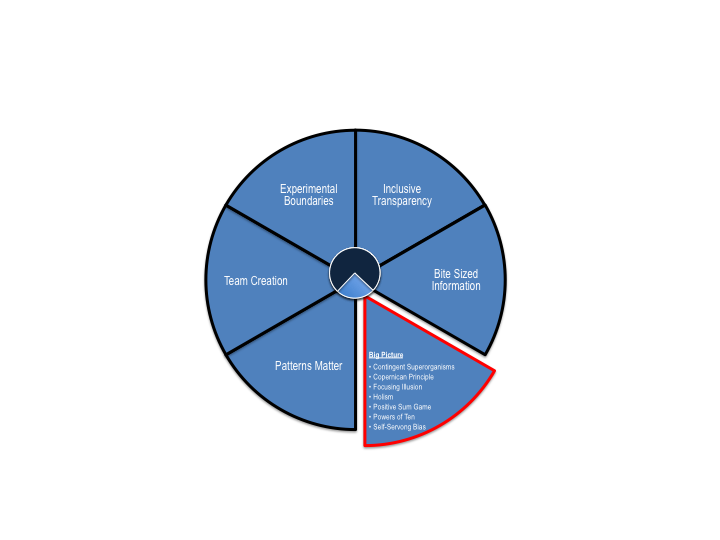
C. Big Picture
13. Contingent Superorganisms – After people have achieved what they want to achieve individually then they automatically become more open to helping others and larger audiences. That is why at a certain point in time, people like to give back and create a legacy of selfishness. For organizational transformation, it becomes really important to figure out who these people are. These are not necessarily those who are perceived to be accomplished (e.g. superstar executive etc.) but it could anyone from the lowest rungs of the organization to people outside the organization. To address this:
- Find out what motivates people outside of work and use those external motivations to see if the same passion is displayed at work. If not, ask the individual how that can happen
- Understand that status quo often means being burnt too many times
- Keep an active lookout for those who put the group before themselves and would volunteer their own time to be a part of the transformation. Don’t just use these people but recognize them in various ways (e.g., employee recognition, bonus, paid family vacations etc.)
- Be cognizant of people who are getting involved because of their superiors
- Be vigilant and recognize that sometimes the person being recommended is not the best
14. Copernican Principal – People often feel that their role is insignificant compared to the big picture. These thoughts can lead to people being tuned out and just punching the clock rather understanding their value in the organization. To address this:
- Visually show how their individual contributions are changing the organization for the better
- Don’t be afraid to apply this concept for customers as well and show how their contributions (e.g., buying products/services, giving feedback etc.) is helping create a better organization
15. Focusing Illusion – People often focus on the ‘only if’ and live in its illusion. For organizational transformation, this means that people often mistake transformation as a big bang activity while it is a slow a steady approach to constantly improving organizations. To address this:
- Share the plan of organizational transformation would across various organizational functional units
- Constantly remind and show that organization transformation is about the ‘here and now’
16. Holism – The idea here is that in the big picture, the little details do count as well. For organizational transformation this means that no information is minuscule enough that it has no affect of transformation. In fact even the minuscule information if not understood and addressed can lead to a snowball effect that can come from the left field when it comes to the transformation journey. To understand this:
- Recognize that due to education, work and life experiences some people prefer to stay within their own silos without knowing how others actions affect them and how their actions affects other beyond their functional responsibilities
- Create a ‘one-view’ map that shows the major connections between all the silos and how indirectly they are helping and hindering each other
- Create a forum where interdependencies can be understood and improved and go beyond functional boundaries and few peoples
- Help people connect the dots and display it everyone can see it
17. Positive Sum Game – Everyone wins. For organizational transformation, this means that transformation objectives should be balanced in a way that all teams that are involved get benefits out of it. For some this benefit would be having a better idea of how the business works, for some this benefit would be doing more with less, for some this benefit would be transitioning to another career. To create a positive-sum game:
- Listen to all parties to come with positive sum solutions
- Act in the interest of all parties and show this at the begin, middle, end and after the organizational transformation efforts
18. Powers of Ten – By understanding scaling laws you can have a better idea of where anything sits in the bigger scheme of things. For organizational transformation, this means that you should ask and assess and assign actual values in terms of magnitude of transformational activities. To do this:
- Ask various functional areas to represent the importance of their work for the organization. Then ask another functional area to assess what has been reported. After this brings the functional areas together to discuss the difference which are often times based on known and unknown biases (e.g., IT are only order taker, accountants are just bean counters etc.)
19. Self-Serving Bias – People perceive themselves to be better than others. For organizational transformation, this means that for success people would take credit but for failure they would blame others. To address this:
- Create surveys to reveal people’s biases towards themselves, others, their functional unit and other functional units
- Emphasize that successfully transformation efforts benefit them individually and the organization as a whole
- Document any concerns that are revealed to get a sense of the idea of culture in the people’s minds
D. Patterns Matters
20. Cycles – Everything is cyclical. For organizational transformation efforts this is a disaster repeating itself in terms of hiring the same kind of people, redundant processes and outdated technologies. To address this:
- Determining candidate cultural fit does not mean to hire or rehire from the same pool (e.g., age, gender, geographical location, race, birth place, language pronunciations, how they look etc.) of people
- Identify processes that have a black hole meaning that they are being carried out without any regard to their usefulness
- Recognize patterns in organzational transformation efforts
- Understand that technologies that are being used are not necessarily the best to get the job done but are those that people are just comfortable with and hence continue to use them
21. Double-Blind Control Experiments – This method is used to identify the underlying biases people have without even recognizing them. In organizational transformation this can mean the difference between on board or just being an observer to see what happens. Use this method to:
- Determine how do people actually feel about transformation efforts anonymously
- Determine if there are varying tendencies (e.g., preference to work with younger folks rather that older folks, difference between 9-5 versus getting the job done, text versus visual display of information etc.)
22. Fixed-Action Patterns – Certain behaviors and attitudes displayed by people are not necessarily biases but have been learned and reinforced over time so it becomes a habit. To leverage this:
- Observe what people do and then ask why they did it. Get to the underlying factors of their actions
- Train people so that transformation is not a one-time event but a continuous improvement initiative
23. Hidden Layers – As time progresses people develop layers between what is reality and what is perception. These layers help develop habits that can be restarted even after without practice years later. For organizational transformation, this means that success and failures are learned over time and can be used to affect the organization. To figure this out:
- Find out who has been involved in any kind of transformation even it was outside the current organization
- Assess what habits led to success or failure keeping in mind biases
24. Predictive Coding – People are a product of what happens to them and over time this becomes a pattern recognition system to engage or avoid. For organizational transformation, this means that people’s thoughts and eventual actions are based on what has happened to them. To leverage this:
- Positively reinforce the benefits of transformation not only though talk but through action
- Get to the root of people’s behavior and actions to turn them into a positive
- Understand that you cannot turn everyone into a champion but as long as they are not an obstacle then you have come closer to a positive result
E. Team Creation
25. Effective Theory – If you can’t measure it then you can’t improve it. For organizational transformation, what this means is that while it is useful to have plans and work towards achieving the objectives of those plans but they are meaningless if it is not being measured. To assess this:
- Properly define what successes and failures looks like
- Know what to do when successes and failures are encountered
- Don’t measure for the sake of measuring
26. Expanding In-Group – The world is a global village and there is more interconnectedness than anytime else in our history. This interconnectedness can lead to looking at solving problems from different angles. For organizational transformation, this means that the more diverse and cross-over that you have in your teams, the better it would be able to solve problems on a bigger scale. To leverage this:
- Create hybrid teams from various parts of the organization
- Inform team members that they are all equal in the team and everyone has a veto
- Give the same problems to different teams and see what solutions they come up with. Combine these teams to create solutions that have a holistic view of the organization and understand the internal and external values of creating such solutions
27. Fear of the Unknown – People’s known and unknown biases can make them inaccurately determine their risks and benefits. For organizational transformation, this can mean the difference between making a big gain versus remaining in the status quo. To accomplish this, do:
- Create metrics on how to conduct risks and benefits analysis individually and for the organization
- Train people in making sound judgments without rhetoric and biases
28. Rational Unconsciousness – People make conscious and unconscious decisions despite their awareness of its weaknesses. For organizational transformation, this means that despite people’s knowledge of what is the right thing to do people unconsciously continue to do the opposite. To address this:
- Ask people what they want from this transformation and then observe it what the want is consistent with their actions
- Enlighten these people by discussing what you have observed
- Create the opportunities for people to grow and adjust to the new reality
29. Structured Serendipity – Luck is found through a concerted effort in achieving objectives. For organizational transformation, this means that a structure should be put in place with the ability to be flexible and adapt if necessary. To do this:
- Create specific milestones and their relevance to individuals and organizations
- Show that through structure they are able to achieve their objectives efficiently and effectively (e.g., faster innovation, removal of redundant processes
F. Experimental Boundaries
30. Failure Liberates Success – Encourage failure and experimentation. For organizational transformation, give your teams the ability to refine, reiterate and rethink problems to solutions. To influence this:
- Task your teams to think of as many problems as they can about a solution. Ask the other teams to create solutions to those problems and then make these teams sit together to figure things out
- Create ways for teams to rinse and repeat SPICE factors
- Measure the various ways to find optimum solutions
- Don’t just go for the lowest hanging fruit. Go after big things and challenge the foundations to make it stronger
31. Kaleidoscopic Discovery Engine – When it comes to insights and innovation, people are always learning from each other. For organizational transformation this means that there is constant learning activity going on within and outside the organization. Sometimes these activities can excel the transformation journey if they are given enough thought. To leverage this:
- Get innovative ideas at an individual level. These range from (1) direct circle of influence, (2) extended circle of influence, (3) areas that people are interested in, (4) unrelated ideas and (5) stitching, applicability and combination
- Get innovative ideas at an organizational level. These range from (1) internal customers, (2) external customers, (3) within the industry, (4) outside the industry and (5) integration, customization and combination.
- Build and refine upon what has been learned
- Document what was learned and what was the result
32. Pessimism Meta-Induction – Every theory is up for debate and discussion in light of new evidence. For organizational transformation, what this means is that the organization has to be constantly challenged to question the status quo not only periodically but also ad hoc to check if stated objectives are being achieved. To accomplish this:
- Create an open discussions forums where all topics related to organizational transformation should be discussed in a transparent manner
- Follow-up on issues and concerns with corrective action plans
33. Randomness – There are certain things that we cannot control. For organizational transformation, this means that regardless of how pristine and well thought-out your plan for transformation is it is bound to run into unanticipated obstacles. To plan for this:
- Have time and money set aside for contingency purposes
- Accept failure as an option and have a way to document and measure it so learn from it
- Welcome wrenches in discussions so that you can address them before it is too late to address them
34. Skeptical Empiricism – Don’t believe by merely observing but by careful thought. For organizational transformation, this means that most people get easily swayed by what they observe and thus mechanisms should be put into place where they are free to challenge the status quo with evidence and deep thoughts. To remedy this:
- Show proof of what you are trying to accomplish and how it would have a positive effect on them
- Document what is going on to get a feel of the underlying culture activities
- Create action plans to address these different observations when they happen
35. Uncalculated Risks – People often worry about the big stuff but don’t take into account the little stuff that can affect their risk-taking. For organizational transformation, this means that being less precautious on the little stuff can slowly thwart efforts. To address this:
- Create a risk matrix for big and small items
- Create a mechanism for measuring all risk tolerances
Now that we have understood the varying concepts that affect organizational transformation efforts, let’s ask the following questions:

